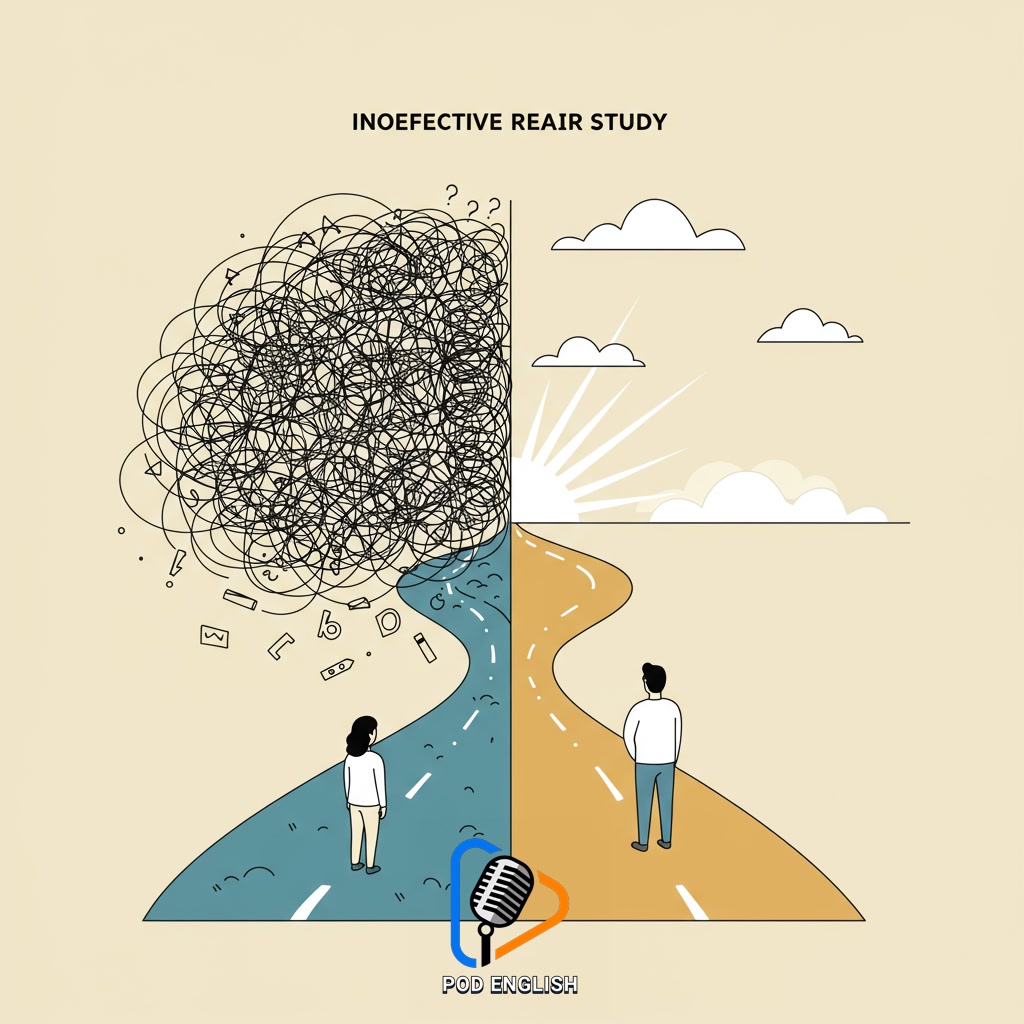Learn English
Learn English Effectively: The Daily Habit vs. Last-Minute Cramming

This content explores two approaches to learning English: establishing a daily routine versus cramming at the last minute. It argues that consistent, regular practice is significantly more effective for achieving fluency and long-term retention. The discussion emphasizes the benefits of integrating English study into your daily life for better results.
Table of Contents
- Section 1: Introduction: Why Effective English Learning Methods Matter
- Section 2: Understanding the Daily English Study Habit: Consistency is Key
- Section 3: The Appeal and Pitfalls of Last-Minute Cramming for English
- Section 4: Daily Habit vs. Cramming: A Comparison of Long-Term Results
- Section 5: Practical Tips for Building and Maintaining Your Daily Study Routine
- Section 6: Conclusion: Choosing the Path to Sustainable English Proficiency
Section 1: Introduction: Why Effective English Learning Methods Matter
Embarking on the journey to learn English is an exciting goal, opening doors to new opportunities and connections. However, simply wanting to learn is not enough; the approach you take significantly impacts your success and fluency. This introduction explores why choosing effective English learning methods matters fundamentally. We often hear about different study techniques, but understanding which ones truly work – and why – is crucial for making steady progress and avoiding frustration. As we delve into comparing consistent daily study habits versus the intense, last-minute cramming approach, it becomes clear that the method you choose isn’t just a preference, but a critical factor in achieving lasting proficiency. Recognizing the importance of an effective strategy is the essential first step towards mastering the English language efficiently.

Introduction: Why Effective English Learning Methods Matter
Section 2: Understanding the Daily English Study Habit: Consistency is Key
Understanding the daily English study habit is fundamental to effective learning. It means dedicating a small, consistent amount of time each day, perhaps 15-30 minutes, to engaging with the language. This isn’t about overwhelming yourself with hours of study but rather building a regular routine, like brushing your teeth or having breakfast. Consistency is key because it keeps the language fresh in your mind, reinforces what you’ve learned, and prevents the need for intense cramming later. By making English a part of your daily life, you create momentum, reduce stress associated with learning, and significantly improve your long-term retention and fluency. It’s the steady effort, not the occasional burst, that truly leads to mastery.

Understanding the Daily English Study Habit: Consistency is Key
Section 3: The Appeal and Pitfalls of Last-Minute Cramming for English
In stark contrast to the steady rhythm of daily study, last-minute cramming presents a tempting alternative, especially when facing an imminent test or deadline. The appeal lies in the perceived efficiency: a concentrated burst of intense effort to absorb a large volume of information quickly. It feels productive in the moment, offering a sense of relief or last-ditch preparedness. However, the pitfalls for English language learning are significant. Cramming primarily engages short-term memory, leading to superficial understanding and rapid forgetting once the immediate pressure is gone. It lacks the consistent exposure and spaced repetition necessary for building fluency, developing intuitive grasp of grammar, and truly integrating vocabulary into active use. This approach often results in high stress, burnout, and ultimately, fails to foster the deep, lasting comprehension required for effective communication.

The Appeal and Pitfalls of Last-Minute Cramming for English
Section 4: Daily Habit vs. Cramming: A Comparison of Long-Term Results
Building on the idea of cramming’s immediate appeal, it’s crucial to examine the long-term consequences of both methods. While cramming might help you pass a test tomorrow, its effects are notoriously short-lived. Information crammed into short-term memory often fades rapidly after the immediate need passes, leaving little lasting knowledge or fluency. In stark contrast, the daily habit of studying English fosters gradual but deep understanding and retention. Each small, consistent effort builds upon the last, strengthening neural pathways and solidifying vocabulary, grammar, and pronunciation over time. This steady accumulation of knowledge and skill leads to genuine fluency and confidence, making English a useful tool rather than just a temporary obstacle overcome. The long-term results clearly favor the consistent, daily approach for achieving true proficiency.

Daily Habit vs. Cramming: A Comparison of Long-Term Results
Section 5: Practical Tips for Building and Maintaining Your Daily Study Routine
Following the discussion on the pitfalls of cramming, implementing a consistent daily study habit becomes the clear path to meaningful progress. To begin building your routine, start small – even 15-20 minutes a day is more effective than sporadic long sessions. Schedule your study time like any other important appointment, finding a time when you are most alert and free from distractions. Discover resources you enjoy, whether it’s language learning apps, podcasts, videos, or practice exercises, to keep motivation high. Track your progress, maybe using a simple calendar or notebook, to see how far you’ve come and stay accountable. Remember to be flexible; life happens, and missing a day isn’t a failure, just get back on track the next. Consistency, not intensity, is key to mastering English.

Practical Tips for Building and Maintaining Your Daily Study Routine
Section 6: Conclusion: Choosing the Path to Sustainable English Proficiency
In conclusion, the choice between establishing a consistent daily English study habit and resorting to last-minute cramming is fundamentally a choice between sustainable progress and temporary, superficial gains. While cramming might offer a quick fix for an immediate test, it fails to build the deep understanding and automaticity required for true fluency and long-term retention. Embracing a daily routine, even for short periods, allows the brain to process and solidify information gradually, leading to more confident and natural English usage. This consistent effort, like building a sturdy structure one brick at a time, is the proven path to achieving lasting proficiency and unlocking the full potential of your English learning journey. Make the deliberate choice today to prioritize steady, regular practice for a future where English feels natural and effortless.

Conclusion: Choosing the Path to Sustainable English Proficiency













